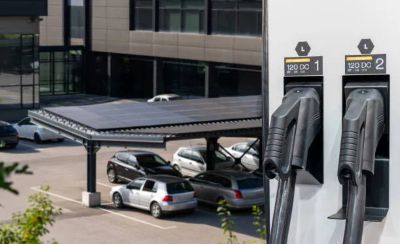


Understanding Mode 3 Charging: The Smart Standard for Electric Vehicle Recharging
As a Leading EV Charger Manufacturer in China, LiCB Charge Offers Reliable AC and DC Electric Vehicle Charging Stations Along with Comprehensive Charging Solutions.
As electric vehicles (EVs) become more popular worldwide, knowing how to charge them efficiently is essential. Among the various charging methods, Mode 3 charging has emerged as the most common and efficient solution for everyday EV use—whether at home, work, or public stations.
Mode 3 charging involves connecting an EV to a dedicated AC charging station using a specialized cable equipped with safety and communication features. Unlike Mode 2, which uses portable chargers plugged into standard household sockets, Mode 3 requires a fixed charging point such as a wall box at home or a public charge station.
A key feature of Mode 3 is smart communication between the vehicle and charger. This ensures the energy transfer is optimized for safety and speed, avoiding electrical faults and overheating.
There are two main connector types used in Mode 3 charging:
Type 1 Connector: Mostly found on American and some Asian vehicles, supporting single-phase charging.
Type 2 Connector: The European standard, supporting both single-phase and three-phase charging, making it versatile and widely compatible.
Cables typically range from 5 to 10 meters, giving drivers flexibility in parking. Longer cables are especially useful in public parking lots or garages with challenging layouts.
Mode 3 chargers support a range of power levels:
Single-phase: Usually 3.6 kW to 7.2 kW, ideal for overnight home charging with a full recharge taking 6 to 8 hours.
Three-phase: Faster charging at 11 kW to 22 kW, allowing a full charge in 2 to 3 hours—perfect for public and commercial settings.
Mode 3 charging uses an intelligent protocol that:
Establishes communication between the EV and charger to confirm compatibility and battery status.
Regulates current to ensure safe, efficient energy flow.
Monitors temperature and voltage to prevent faults.
Automatically stops charging once the battery is full.
This system maximizes safety and efficiency for both the vehicle and electrical grid.
Mode 2 uses portable cables with an in-built control box plugged into regular sockets, offering slower speeds (2.3 kW to 3.6 kW) and longer charging times (10+ hours). It’s suitable for occasional or emergency charging but not ideal for regular use.
Mode 3 requires a dedicated charger, offers faster charging (3.6 kW to 22 kW), and has enhanced safety features, making it the preferred option for daily charging.
Faster Charging: Especially with three-phase power, reducing charging time dramatically.
Improved Safety: Constant communication and monitoring prevent electrical faults.
Wide Compatibility: Works with most modern EVs, especially in Europe.
Flexible Use: Suitable for home, workplace, and public charging stations.
Home: Efficient overnight charging with dedicated wall boxes and the benefit of lower electricity rates during off-peak hours.
Work: Many companies offer Mode 3 chargers to support employees’ EVs during office hours.
Public: Shopping centers, parking garages, and hotels provide fast Mode 3 chargers for convenient top-ups.
Mode 3 charging will evolve with features like dynamic load management, integration with renewable energy sources, and vehicle-to-grid (V2G) technologies, further supporting the shift to sustainable transportation.
Mode 3 charging is the smart choice for everyday EV drivers, offering the best mix of speed, safety, and convenience. Whether at home, work, or in public, investing in Mode 3 charging infrastructure ensures a reliable and future-proof charging experience.Know more about Google SEO Directory
